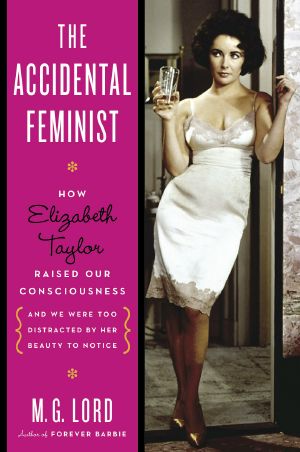The Accidental Feminist · How Elizabeth Taylor Raised Our Consciousness and We Were Too Distracted by Her Beauty to Notice

- Authors
- Lord, M.G.
- Publisher
- Walker & Company
- Tags
- biography , television , motion picture actors and actresses , united states , performing arts , motion picture actors and actresses - united states , taylor , general , feminism , entertainment & performing arts , history , biography & autobiography , elizabeth , film & video
- ISBN
- 9780802716699
- Date
- 2012-01-31T00:00:00+00:00
- Size
- 0.97 MB
- Lang
- en
Movie stars establish themselves as brands--and Taylor's brand , in its most memorable outings, has repeatedly introduced a broad audience to feminist ideas. In her breakout film, "National Velvet" (1944), Taylor's character challenges gender discrimination,: Forbidden as a girl to ride her beloved horse in an important race, she poses as a male jockey. Her next milestone, "A Place in the Sun" (1951), can be seen as an abortion rights movie--a cautionary tale from a time before women had ready access to birth control. In "Butterfield 8" (1960), for which she won an Oscar, Taylor isn't censured because she's a prostitute, but because she chooses the men: she controls her sexuality, a core tenet of the third-wave feminism that emerged in the 1990s. Even "Who's Afraid of Virginia Woolf?" (1966) depicts the anguish that befalls a woman when the only way she can express herself is through her husband's stalled career and children.
The legendary actress has lived her life defiantly in public--undermining post-war reactionary sex roles, helping directors thwart the Hollywood Production Code, which censored film content between 1934 and 1967. Defying death threats she spearheaded fundraising for AIDS research in the first years of the epidemic, and has championed the rights of people to love whom they love, regardless of gender. Yet her powerful feminist impact has been hidden in plain sight. Drawing on unpublished letters and scripts as well as interviews with Kate Burton, Gore Vidal, Austin Pendleton, Kevin McCarthy, Liz Smith, and others, *The Accidental Feminist *will surprise Taylor and film fans with its originality and will add a startling dimension to the star's enduring mystique.